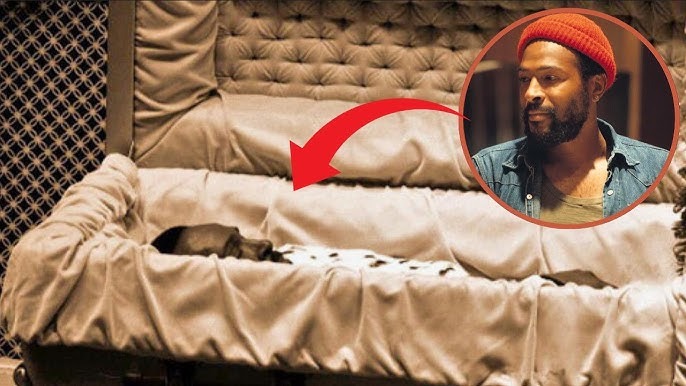Marvin Gaye’s Tragic End and the Shocking Discovery in His Room

Marvin Gaye, known as the Prince of Soul, left an indelible mark on American music with his soulful blend of gospel, smooth delivery, and socially conscious themes. When his voice fell silent on April 1, 1984, the world lost a legend whose songs like “What’s Going On” and “Let’s Get It On” had touched millions.
After his tragic death, the opening of his room in his Los Angeles home revealed a haunting scene that shocked everyone. What lay inside wasn’t just the space of a music icon; it held silent witnesses to his final moments, deepening the mystery surrounding his life and untimely end.
Born Marvin Pentz Gaye Jr. in Washington, D.C., he grew up singing in his father’s church before shaping Motown’s sound in the 1960s and 1970s. Despite his success, personal struggles plagued him. By 1975, he purchased a historic Tudor-style house in Los Angeles, but financial woes and drug issues forced him to transfer it to his parents, though he continued living there. His relationship with his father, Marvin Gaye Sr., a strict preacher, was strained, marked by conflict despite occasional closeness.

His mother, Alberta, provided warmth, often shielding him from his father’s temper. This fragile family dynamic collapsed tragically in 1984 during a heated argument between his parents. Marvin intervened to protect his mother, leading to a violent confrontation. His father retrieved a .38 caliber revolver—ironically a gift from Marvin—and shot him twice, in the chest and shoulder. Rushed to the hospital, Marvin was pronounced dead at 10:01 p.m., a day before his 45th birthday.
When police entered Marvin’s room, they found evidence of a violent struggle. The revolver, later discovered under Marvin Sr.’s pillow or on the lawn (accounts vary), was secured, with forensic reports confirming the fatal damage to Marvin’s vital organs.
The investigation revealed a heartbreaking reality: a music icon lost in his own home due to long-standing family tensions. Marvin Sr. was taken into custody, appearing confused, while Alberta was devastated, recounting her son’s protective act.

The toxicology report added another layer of tragedy, showing cocaine and traces of PCP in Marvin’s system, likely impairing his judgment. Autopsy findings also highlighted his battle with depression, worsened by career pressures and public scrutiny, painting a picture of a man overwhelmed by inner demons.
Further complicating the case, a benign brain tumor was discovered in Marvin Sr.’s brain post-incident, raising questions about his mental state during the shooting. Though deemed competent for trial, he pleaded no contest to voluntary manslaughter in a controversial plea deal, receiving a six-year suspended sentence and probation.
Public grief was immense, with thousands attending Marvin’s funeral at Forest Lawn Cemetery, joined by peers like Stevie Wonder, who paid tribute to his influence. Despite a $1.9 million debt at his death, Marvin’s music royalties gradually restored his estate, proving the enduring power of his art.
Marvin Gaye’s story is one of brilliance shadowed by personal torment. The shocking discovery in his room—evidence of a violent end—mirrors the chaos of his life. His legacy, sustained by timeless music, outlives the tragedy, reminding us of art’s ability to heal even the deepest wounds.

